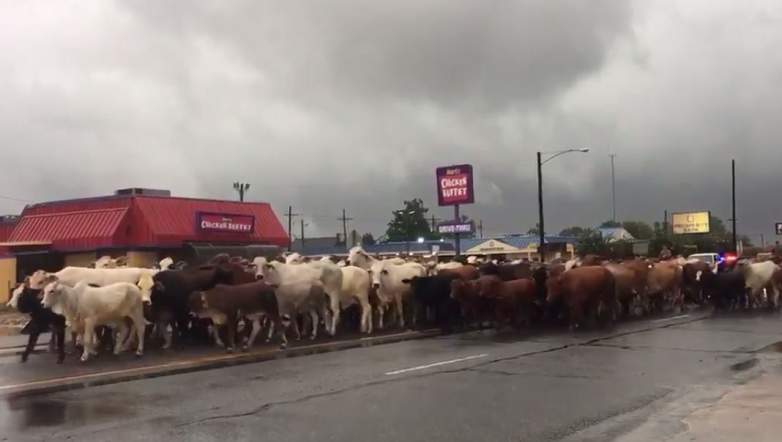
Agricultural News
Hurricane Harvey Leaves Extensive Damage Behind to Cotton, Rice and Sorghum- Cattle Costs Unknown
Tue, 29 Aug 2017 05:38:02 CDT
 With rain continuing to fall in parts of southeastern Texas and now southwestern Louisiana, rescue efforts continue in and around Houston. Further west, where Hurricane Harvey plowed unto Texas, those involved in agriculture are trying to assess the damage that has been done. Farm Broadcast colleague Tony St James of All Ag All Day in Floydada, Texas talked with both State Commissioner of Ag for Texas Sid Miller as well as Livestock Market Economist Dr David Anderson of Texas A&M about the Harvey impact on Ag.
With rain continuing to fall in parts of southeastern Texas and now southwestern Louisiana, rescue efforts continue in and around Houston. Further west, where Hurricane Harvey plowed unto Texas, those involved in agriculture are trying to assess the damage that has been done. Farm Broadcast colleague Tony St James of All Ag All Day in Floydada, Texas talked with both State Commissioner of Ag for Texas Sid Miller as well as Livestock Market Economist Dr David Anderson of Texas A&M about the Harvey impact on Ag.
Click on the LISTEN BAR below to hear their comments on damage to the ag community- Miller says cotton, rice and grain sorghum all have been damaged- in each case- harvest was well underway in the impacted area. crops left in the fields are likely gone or damaged to the point of abandonment. In the case of cotton, the round bales that were left out- even covered- are now soaked- Miller says you can expect cottonseed sprout damage in those bales and the quality of the fiber has been damaged.
For farmers that have harvested grain sorghum- the fear is that the grain that has been stored may have been compromised and has been water damaged.
Dr. Anderson says in the 54 counties that Texas had declared ahead of the storm as laying in the potential footprint of Harvey- over 1.2 million beef cows and a large number of their calves were in harm's way. Anderson says it will take time to know how much damage has occured both in terms of death loss as well as in the infrastructure of cattle operations.
Anderson made reference to one video seen on Twitter of cattle moving in Dayton invJefferson County- east of Houston- to escape flood waters- here's a link to that Tweet and the video.
The Texas and Southwestern Cattle Raisers have a page with resource links on it for ranchers to use- they are accepting donations for ranchers hit by Harvey and are taking comments from their members affected. One comment posted from a ranch in the middle of the highest rainfall was posted from S&S Cattle in Waller County- "We have had just under 40 inches of rain since early Saturday morning. Mound Creek has flooded the road and all of our front pastures which I'm sure will kill the grass.
"Got all but 6 cows & 2 calves moved to high ground in back pasture, assume the strays have drown down on the South end somewhere because it gets much deeper. Rode horseback looking for them as far as we could till water just got too deep and unable to see any hidden obstacles that could hurt my horses.
"All of our East fence and cross fencing is either pushed down, ripped out, or just gone, as well as a 28? gooseneck stock trailer rolled over on a pipe fence. "
Meanwhile- a major worry for farmers well away from the Harvey footprint are the ports of Texas and Louisiana.
Two major ports along the Gulf of Mexico in Texas are closed following the flooding and damage from Hurricane Harvey. Ports at the Texas Gulf account for about 24 percent of U.S. wheat exports, three percent of corn shipments and two percent of soybeans. In 2011, the Port of Corpus Christi ranked 13th in the Nation for total waterborne agricultural exports, moving about four million metric tons of cargo. The same year, the Port of Houston ranked sixth in the Nation for total waterborne agricultural exports and ninth for containerized exports, according to data compiled by the U.S. Department of Agriculture. Mike Steenhook of the Soy Transportation Coalition told Bloomberg News that the bigger threat to shipments of corn and soybeans comes from Harvey's potential impact in Louisiana and the Gulf of Mexico. About 60 percent of American soybean exports depart from the region, as do 59 percent of corn shipments.
WebReadyTM Powered by WireReady® NSI
Top Agricultural News
More Headlines...





